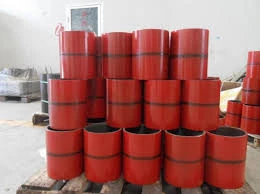- Afrikaans
- Albanian
- Amharic
- Arabic
- Armenian
- Azerbaijani
- Basque
- Belarusian
- Bengali
- Bosnian
- Bulgarian
- Catalan
- Cebuano
- Corsican
- Croatian
- Czech
- Danish
- Dutch
- English
- Esperanto
- Estonian
- Finnish
- French
- Frisian
- Galician
- Georgian
- German
- Greek
- Gujarati
- Haitian Creole
- hausa
- hawaiian
- Hebrew
- Hindi
- Miao
- Hungarian
- Icelandic
- igbo
- Indonesian
- irish
- Italian
- Japanese
- Javanese
- Kannada
- kazakh
- Khmer
- Rwandese
- Korean
- Kurdish
- Kyrgyz
- Lao
- Latin
- Latvian
- Lithuanian
- Luxembourgish
- Macedonian
- Malgashi
- Malay
- Malayalam
- Maltese
- Maori
- Marathi
- Mongolian
- Myanmar
- Nepali
- Norwegian
- Norwegian
- Occitan
- Pashto
- Persian
- Polish
- Portuguese
- Punjabi
- Romanian
- Russian
- Samoan
- Scottish Gaelic
- Serbian
- Sesotho
- Shona
- Sindhi
- Sinhala
- Slovak
- Slovenian
- Somali
- Spanish
- Sundanese
- Swahili
- Swedish
- Tagalog
- Tajik
- Tamil
- Tatar
- Telugu
- Thai
- Turkish
- Turkmen
- Ukrainian
- Urdu
- Uighur
- Uzbek
- Vietnamese
- Welsh
- Bantu
- Yiddish
- Yoruba
- Zulu
Understanding Well Tubing and Casing for Enhanced Oil and Gas Production
Understanding Well Tubing and Casing Critical Components of Oil and Gas Drilling
In the oil and gas industry, drilling is a complex and vital process that requires precision, safety, and efficiency. Among the myriad components that ensure the success of drilling operations, well tubing and casing stand out as critical elements. Understanding their roles, specifications, and functions can provide valuable insights into the intricacies of oil and gas extraction.
What is Well Casing?
Well casing refers to the series of steel pipes that are installed in the borehole of a drilled well. The primary purpose of casing is to stabilize the wellbore, preventing it from collapsing and protecting both the drilling equipment and the surrounding environment from potentially harmful fluids. Casing serves as a barrier to isolate different pressure zones and prevents the migration of environmental contaminants into groundwater supplies.
Casing is installed in sections, typically starting from the surface down to the target depth of the well. Each section is cemented in place, creating a durable and impermeable seal. Various types and grades of casing exist, including surface casing, intermediate casing, and production casing, each designed for specific functions and geological conditions. Surface casing, for example, is crucial for protecting freshwater zones, while production casing supports the final stages of oil and gas production.
What is Well Tubing?
Once the casing is in place, well tubing is installed inside the production casing to transport hydrocarbons from the reservoir to the surface. Tubing is typically made of lighter and smaller diameter pipes than casing, allowing for easier installation and better fluid flow. The primary function of tubing is to provide a conduit for the production of oil and gas, allowing for efficient extraction while maintaining pressure control within the well.
Tubing also serves as a means for injecting fluids into the well, such as water or chemicals, helping to enhance recovery rates and manage reservoir pressure. Tubing systems may come in different configurations based on the needs of the well and the type of fluids being produced or injected.
well tubing and casing

Specifications and Materials
Both casing and tubing require careful consideration of materials and specifications to withstand the harsh environments encountered during drilling and production. Common materials used include carbon steel and various alloys, which are chosen for their strength, corrosion resistance, and ability to endure extreme temperatures and pressures.
Casing and tubing are classified based on standards set by organizations such as the American Petroleum Institute (API). These specifications include the dimensions, wall thickness, and grade of the material, ensuring that the components meet the rigorous demands of oil and gas operations.
Challenges and Innovations
The roles of casing and tubing are not without challenges. Issues such as corrosion, mechanical failure, and well integrity can pose risks to both production and environmental safety. As technology advances, the industry is continually exploring innovations in materials and design to enhance the durability and efficiency of casing and tubing systems.
New developments, such as corrosion-resistant alloys and advanced cementing techniques, are being implemented to mitigate risks and improve operational performance. Additionally, real-time monitoring technologies are increasingly used to track well integrity, further enhancing safety and productivity.
Conclusion
In summary, well tubing and casing are fundamental components in the oil and gas drilling process. By providing stability to the wellbore and facilitating the transport of hydrocarbons, these elements play a crucial role in the efficiency and safety of drilling operations. As the industry continues to evolve, ongoing innovations will undoubtedly enhance the performance of these systems, contributing to more sustainable and efficient energy extraction methods. Understanding the intricacies of well tubing and casing not only highlights their importance but also sheds light on the broader complexities of the oil and gas industry.
-
Tubing Pup Joints: Essential Components for Oil and Gas OperationsNewsJul.10,2025
-
Pup Joints: Essential Components for Reliable Drilling OperationsNewsJul.10,2025
-
Pipe Couplings: Connecting Your World EfficientlyNewsJul.10,2025
-
Mastering Oilfield Operations with Quality Tubing and CasingNewsJul.10,2025
-
High-Quality Casing Couplings for Every NeedNewsJul.10,2025
-
Boost Your Drilling Efficiency with Premium Crossover Tools & Seating NipplesNewsJul.10,2025







